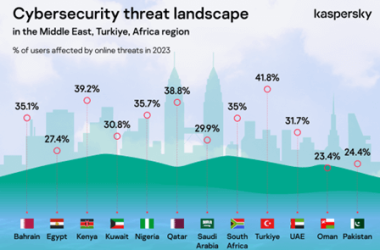The problem of ransom malware has reached epidemic proportions and could be extracting fraudulent payments from as many as 3 percent of victims, a Symantec report has calculated.
In a world already afflicted by botnets, banking Trojans and established problems such as keyloggers and spam, ransomware – programs that ‘lock’ victims’ computers or files until a ransom payment is made – has grown into a major problem, with surprisingly little coverage from security vendors until recently.
Symantec’s report Ransomware: A Growing Menace attempts to shed more light on the problem and comes up with some disturbing findings.
The scams uncovered by the trawl are remarkable for the scale of their ambition, the localisation they employ to help dupe victims and the sheer aggressiveness of their tactics.
The company identified at least 16 distinct families circulating among mostly Russian-based criminal groups, each with its own development cycle. Several of these could have originated with a single master programmer, suggesting a layered industry not unlike that which developed around fake antivirus programs four years ago.
Coming in a variety of forms – a popular tactic is to impersonate national police forces – the criminals demand payment from PC users for a variety of bogus ‘crimes’ such as using unauthorised software or downloading illegal content.
Sums demanded range from $50 to $200. Disturbingly, Symantec’s investigation of one command and control server found that in a single month as many as 2.9 of 68,000 people infected by the malware it controlled were paying up.
On one particular day that would have netted the criminals $33,600 (£21,000) minus any losses lost during money laundering. In a year, some groups must be earning millions from ransom scams which explains the alarming growth of the problem.
Although under-reported, there are plenty of examples of ransomware attacks if you join up the dots.
Last month, 30 businesses in one Australian state were reported to have been hit by ransom malware, with one reportedly paying AUD $3,000 (£1,950) to get the PIN number to unlock their files.
This followed on from earlier warnings by the FBI and UK police that they were receiving a growing number of reports of attacks on consumers. In one incident a medical server in the US was locked up by attackers that demanded a payment be made to retrieve the data intact. These are only the reported attacks – many will go unrecorded.
“As awareness of these scams increases, the attackers and their malware are likely to evolve and use more sophisticated techniques to evade detection and prevent removal. The ‘ransom letter’ will likely also evolve and the attackers will use different hooks to defraud innocent users,” Symantec’s researchers conclude.
The firm identifies three eras of ransomware, starting with isolated file encryptors that originated in Russia in 2006. By 2009 the phenomenon was expanding to the lock screens that demand payment; by 2011 ransomware was sophisticated enough to take payments through electronic systems and had started using impersonation as its major line of attack (where criminals will pretend to represent police forces).






